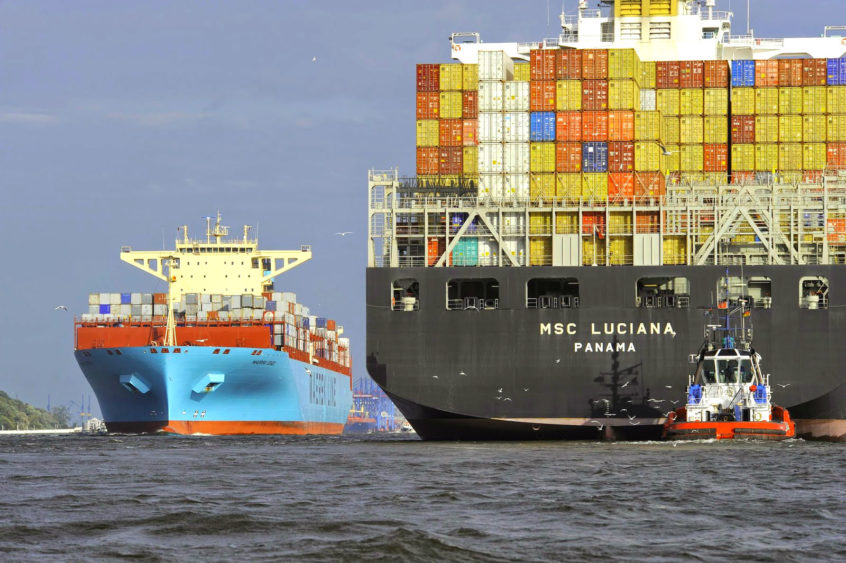The shipping industry has responded to adversity in 2015 and 2016 in a range of ways. These responses are likely to impact the industry in the coming year via an increase from carriers in mergers, consolidations, and alliances as a survival technique. Such configurations will incorporate some level of rate changes and various amendments to service provision protocols as a means of gaining a competitive advantage. A combination of weak demand and overcapacity has meant that the industry provides no soft landing for venture capitalists.
For example, three major shipping alliances within the US trades are already on the books following a go-ahead by the Federal Maritime Commission:
- The Transport High Efficiency Alliance: K-Line, Hapag-Lloyd, NYK, MOL and Yang Ming
- The Ocean Alliance: CGM, CMA, Evergreen, Cosco Shipping and Orient Overseas Container Line
- The 2M Alliance: Maersk and Mediterranean Shipping Co.
Hyundai Merchant Marine wanted to join 2M but was thwarted, so instead has opted to participate in slot purchases and exchanges with MSC as well as Maersk. This is the new brave world of the shipping industry.
These are not small alliances by any stretch of the imagination. For example, THEA is expected to deploy up to 151 ships with a capacity that runs from 3,000 twenty foot equivalents to 14500 TEUs. The alliance members will have a number of strategic safeguards in order to minimize the impact of crises. These include an emergency fund to deal with any Hanjin-type situations. It is not yet clear how much this will affect competition, prices and standards since the industry seems to be morphing into a series of major territorial oligopolies.
Who are the Major Players?
At the top level we have the Transport High Efficiency Alliance; Ocean Alliance; 2M Alliance and HMM. Beneath them are some of the older shipping lines which have decided that it is in their best collective interest to unite under these strategic partnerships. Those like HMM which are not directly partnered are required to cough up millions of dollars in order to gain access to the strategic service facilities. For example, HMM has effectively ceded control of its vessels, instead preferring to buy slots. More specifically; it will be Maersk and MSC that operate the former HMM routes on the Asia-Europe and Asia-US East Coast segments.
Some analysts worry that these configurations slow down the rehabilitation of liners that were facing pressures following the crises in the shipping industry. The month of April in 2017 is going to be a critical testing period because that is when these arrangements are scheduled to take full effect. It may be somewhat puzzling to witness the speed at which these arrangements have received regulatory approval in both the USA and Asia. However, the approval is for an initial period of 3 years at which point there will be another review. In fact, HMM has stated that it would make another bid for full membership of the alliance if their balance sheets remain healthy.
The Competition
There remains a very serious question as to how the non-allied competition will be able to fight against the big four or even big three. There is speculation that any new entrants into the industry will be forced to ally themselves with one of the major strategic players. Others support the notion that there is still a market for independent liners who rely on modest credit in order to provide niche services to clients. That is precisely the market segment that may be giving HMM hope that it can survive outside the current configurations of the shipping industry.
The demise of Hanjin has given many in the industry food for thought. The memorandum of understanding that HMM signed with 2M in July 2016 was something of a last chance saloon for the beleaguered shipper. There is hope that the trans-Pacific trade will provide independent shippers like HMM with sufficient clout to enable them to remain financially viable. For 2M the benefits of the deal include access to HMM products and the ability to use them with far greater efficiency than was possible with a single brand which was tittering on the cusp of a total collapse.
Increasing Container Flows and New Ideas for the Industry
The industry may not descend into a series of oligopolies in the short run. There remain a few opportunities for smaller scale operations. Some experts have argued that optimizing the supply chain is the way to go without having to face the indignity of being taken over by a major alliance.
Another strand to alternative survival is to make better use of shared resources such as information. This will be a shift away from the hoarding culture which has underpinned the previous configurations of the industry. It may also be necessary to get rid of the excessively proprietary systems that thwarted any attempt at systemic improvements in the industry. If that happens then this will be a truly collaborative experience and will reduce the negative impact of an oligopoly.
From a managerial competency point of view, it is important to develop a predictive analysis model for handling uncertainty within the industry. That may involve pricing and marketing strategies that are based on knowledge and experience. The industry in the past has been accused of adopting a defensive-reactionary stance. It is hoped that the new configurations will allow for a more aggressive-proactive stance particularly when handling cyclical crises within the industry.
The practical manifestations of these improvements may incorporate the use of new, efficient vessels that are responsive to consumer demands. How the industry handles the predicted trade offensives between the USA and China will be a critical measure of what has been achieved and what needs to be done. There are certainly some opportunities such as the currently low cost of building ships. It remains to be seen whether the industry will take full advantage of these opportunities even as it undergoes a period of intense consolidation.
Photo source: porttechnology.org





